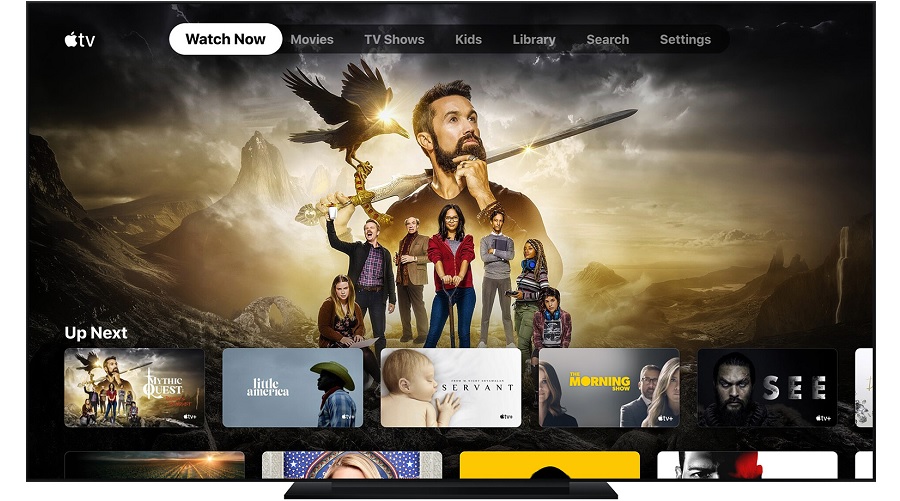
This week on TechHive: Rethinking Roku’s menus

Every time I review one of Roku’s streaming devices, I wish the company did more to make movies and shows easier to find.
Roku has always preferred an app-centric approach, in which mashing the Home button takes you to a big grid of app icons. Its rival streaming platforms, meanwhile, have followed a different path, adding new ways to discover movies and TV shows that don’t involve jumping into a dozen different apps.
I know which approach I prefer. Last week, I called the Walmart Onn UHD Streaming Device my favorite budget streaming player, stealing the honor away from Roku’s Express 4K+. While pricing was a factor—Walmart’s streamer is $10 cheaper—so was the Onn’s Android TV software, which strikes a healthy balance between app icons and content recommendations.
All that got me thinking about how Roku could revitalize its own interface. While Roku shouldn’t abandon its app grid, it could also weave in some fresh ideas without sacrificing simplicity. Read the full column on TechHive.
Weekly rewind
The Dish-Sinclair dispute: On Monday, Dish satellite customers may lose access to Sinclair-owned local channels and the Tennis Channel as part of a carriage dispute between the two companies. Unsurprisingly, Sinclair wants more money for its channels, and Sling would prefer not to raise rates on its rapidly-declining subscriber base. (Sling TV subscribers are spared from this dispute, though it doesn’t carry Sinclair locals anyway, and only provides the Tennis Channel via its Sports Extra add-on.)
A notable wrinkle in the story, via NextTV: Sinclair was apparently banking on Dish to bring back regional Bally Sports channels, going so far as to assume carriage in its most recent revenue estimates. If Dish holds out, it could put even more pressure on Sinclair to deliver its much-hyped standalone sports streaming service next year.
Related story: Viewership of local MLB games is way down this year compared to 2019. Turns out that when you have to pay at least $85 per month to watch certain regional sports channels without cable, a lot of folks will simply tune out.
TCL’s Android TV alliance: Along similar lines to this week’s column, TCL announced that it will use Google’s Android TV software in its latest 5-Series 6-Series TVs. While TCL has dabbled in Android TV before, this represents a major expansion into higher-end sets. TCL says it will continue to sell Roku TVs as well, even as it looks to diversify.
In a press release, TCL pointed to Android TV’s content-forward menu system as a big attraction, though I doubt that’s the only reason that the company is getting on board. As Protocol’s Janko Roettgers has reported, Roku doesn’t share any ad or service revenue with its TV partners, whereas Google gives TV makers space to promote and monetize content on the home screen. And we all know how much TV makers love “post-purchase monetization.”
(For what it’s worth, I asked a Google spokeswoman whether it has any kind of revenue-sharing agreements with Android TV device makers, and she said the company doesn’t disclose such details. That’s not the same as “no.”)
Cord-cutting savings survey: Parks Associates has an interesting survey out that says cord cutters are saving an average $30 per month compared to their old TV bills. That may not sound like much, but it’s based on an average streaming TV bill of $85 per month, and you can certainly spend a lot less than that. To that end, Parks notes that “cord nevers”—those who never had traditional pay TV service—are spending half as much, presumably because they’re less inclined to pay for expensive streaming bundles like YouTube TV and FuboTV.
Also, Parks’ average savings is based on what cord cutters used to pay for traditional TV service alone. It doesn’t appear to consider whether folks were already subscribed to any streaming services before they dropped cable. If they were, the study would understate how much people were paying for TV before, and how much they saved from cord cutting as a result.
More catch-up
- Netflix cracks down on VPN use, causing collateral damage.
- Got problems with the HBO Max app? WarnerMedia says it’s fixing them.
- Pirated streaming sites rake in $1.3 billion annually from ads.
Save more money

Good news if you’ve wanted to watch Ted Lasso but don’t want to pay for yet another subscription: Target is currently offering four months of Apple TV+ for free, even if you previously got Apple’s free year of the service. The offer may also stack with existing subscriptions, though I can’t confirm this on my end.
You do have to join Target’s Circle rewards program first, but that doesn’t cost anything. Once you join, head to this page, where you’ll see offers for Apple TV+ and several other Apple services. After signing up, you can immediately cancel on your iOS device via Settings > Your name > Subscriptions, and you’ll still get the full four months without being billed at the end. (Thanks for the tip, Bill C.!)
A couple other notable offers:
- New Philo subscribers can get their first month free with the code DECKTHEHALLMARK. Just make sure to click “I have a redemption code” on this sign-up page.
- Verizon is offering a year of AMC+ with a new line of wireless service, or six months if you upgrade to a 5G phone on an existing line.
Thanks for reading!
Thanks to everyone who sent in story ideas last week. I look forward to digging into some of the issues and topics you mentioned in future TechHive columns. Got questions or comments of your own? Just reply to this email to get in touch.
Until next week,
Jared
